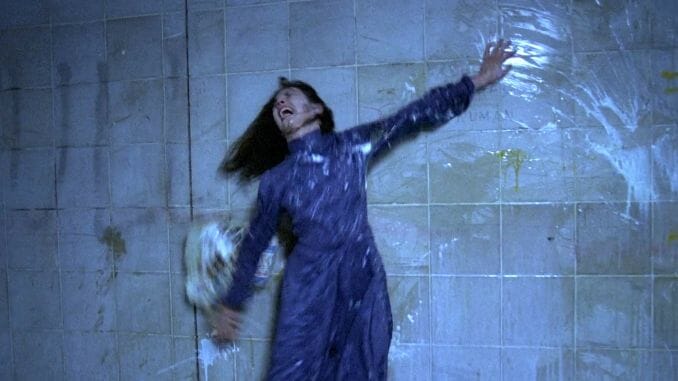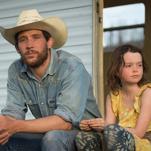The Best Movies on Metrograph At Home

The best movies on Metrograph At Home—the streaming service curated and maintained by the fine folks behind Metrograph NYC’s theater and the Metrograph distribution company (which helped bring restorations of films like Possession to discerning moviegoers—are hard to nail down simply because there’s so much quality on offer. Much like the Criterion Channel or another highly curated service, there’s some serious distance between what Metrograph At Home offers compared to a more slop-centric streamer like Amazon. That’s a huge plus, but it can also be a little intimidating. We’ve looked at the very best on offer, and kept our list up to date with the films coming and going to the service
Available on Roku, Fire TV, Android TV, Apple TV, Google TV and Chromecast, Metrograph at Home offers over 100 movies, hand-picked by the same team programming the theater. Maybe you can’t make it out to a screening at Ludlow Street. Maybe you want to supplement your frequent trips with some bonus content and better deals. Maybe you live somewhere where an “arthouse theater” is just whoever in town owns the most Criterion DVDs or has the biggest torrented Plex library. Whatever the case, there’s fewer and fewer opportunities to watch rotating film collections that actually feel like collections rather than business decisions. With movies streaming from filmmakers like Jane Campion, Jafar Panahi, Joanna Hogg, Jean Renoir, Jean-Luc Godard and others whose first names don’t start with J, there’s a ton of film history at your fingertips—supplemented by filmed Q&As and informative subsection write-ups. It’s relatively inexpensive ($50 gets you a year, with extra goodies if you live in New York) and thoroughly rewarding.
Here are the best movies streaming on Metrograph At Home right now:
1. Possession
Year: 1981
Director: Andrzej Zulawski
Stars: Sam Neill, Isabelle Adjani
Rating: R
When Andrzej Zulawski’s Possession finally opened, critics, unfamiliar with horror movies to the point of lacking qualification to cover them, plead the fifth by pivoting to Roman Polanski’s Repulsion. Let’s be fair to these critics: In 1983, they saw Zulawski’s vision trimmed by 40 minutes and recut into what writer, filmmaker and scholar of Eastern European cult cinema Daniel Bird calls “a conventional horror film,” speaking with Paste. As if proving the point, Metrograph Pictures premiered a new 4K restoration of Zulawski’s masterwork. This version of the film, Bird says, is not a conventional horror film, by either the 1980s’ standards or those of today. Because today, Possession has an audience and a reputation. Possession is gooey, gory and grotesque, and on romantic matters it’s plain old icky. The movie’s hardest to watch scenes occur between its protagonists, Anna (Adjani) and Mark (Neill), a husband and wife in the midst of upheaval against the backdrop of Cold War-era West Berlin, a place experiencing upheaval of its own. Mark’s a spy returned home having completed undisclosed espionage in an undisclosed country. Anna fell for another man in Mark’s absence and wants to try separation. Mark abhors the idea, though he abhors the man, Heinrich (Heinz Bennent), more. Most of all, he abhors the discovery that Anna’s been two-timing both of them with a slimy tentacle monster in a derelict apartment just a hair away from the Berlin Wall. Possession captures the dissolution of two relationships: West Germany’s from East Germany and Mark’s from Anna. Everything ends in tears. That’s horror, folks.—Andy Crump
2. Aguirre, the Wrath of God
Year: 1972
Director: Werner Herzog
Stars: Klaus Kinski, Elena Rojo, Ruy Guerra, Del Negro
Rating: R
The Rosetta Stone to understanding the relationship between director Werner Herzog and actor Klaus Kinski is contained within watching the way Herzog sees Kinski as Aguirre, the Conquistador circa 1560 who, through the sheer power of his belligerence, led a small army of Spaniards to their certain doom. In Kinski’s disturbing, hobbled presence, Aguirre is delusion manifest, his need to find the lost City of Gold while trekking through the unforgiving rain forests of Peru so corrupt and surreal it appears to be crippling his body from the inside out, crawling free from his heart and escaping his bug-eyes. Herzog exploits that delusion when he casts Kinski—known IRL for his self-aggrandizing optics and unbelievable cruelty—and in Aguirre, the Wrath of God is no purer sense of just how wholly Herzog knows Kinski’s true nature, letting it seep into—infect—the reality of the film itself: “Based on a true story” wasn’t so debased a cinematic term until Fargo took up the challenge decades later. Which is pretty much how Herzog treats true stories anyway—his documentary subjects he’s known to openly manipulate, and even Paul Cronin’s Werner Herzog: A Guide for the Perplexed book, a series of conversations amounting to a career retrospective, Cronin prologues with a lengthy explanation for how involved Herzog was in editing and rewriting his own interviews. What’s left in lieu of fealty to the story of Gonzalo Pizzaro’s ill-fated expedition is something so much more visceral: A reenactment of the story’s—and therefore History’s—pain, absurdity and grand illusion. —Dom Sinacola
3. Strawberry Mansion
Year: 2022
Director: Kentucker Audley, Albert Birney
Stars: Kentucker Audley, Reed Birney, Penny Fuller, Grace Glowicki, Linas Phillips
Rating: NR
The intangible logic of our subconscious minds is what fuels Strawberry Mansion, a dazed and dreamy jaunt through nostalgic reverie and existential anxieties. Co-directed by Albert Bimey and Kentucker Audley (who also stars), the film is an exercise in creating a dreamscape by way of capturing texture—a venture that renders enthralling, gorgeous and unsettling images as a result. Not only is Strawberry Mansion a genuine feast for the eyes, but its plot is far more cohesive and calculated than most dream-like narratives care to strive for. This ensures that none of the audience falls into their own movie-induced slumber while also serving as a boon to the project’s ethos—one that desperately urges us to pay close attention to the details and potential meanings of our dreams, as they might just be the very key to our survival. Set in the not-so-distant future, Strawberry Mansion follows James Preble (Audley), an auditor who works for a governmental agency that regulates “dream taxes,” a result of ads being projected into our most intimate mental moments. When he arrives at a sprawling Victorian abode with a magenta exterior, he believes he’s simply making a routine house call to address unpaid back taxes. An eccentric older woman named Bella (Penny Fuller) answers the door, and says she’ll only allow the tax man inside if he complies with her code: “To enter, you must lick the ice cream cone.” A bite-sized scoop of strawberry ice cream sits atop a small sugar cone—and though he’s reluctant at first, James eventually relents and licks the ice cream cone, a decision which effectively begins his odyssey of wading through thousands of VHS tapes containing Bella’s dreams. While he’s officially meant to be viewing these in order to collect data, he begins to fall in love with the younger version of Bella (Grace Glowicki) that serves as her constant avatar in dreamland. In fact, the auditor is so smitten that he hardly realizes the conspiracy he’s unwittingly landed himself within, spending all day in a clunky headset instead of piecing together the significance of how advertising and unpaid taxes converge. Always engrossing yet never laboriously abstract, Strawberry Mansion creates a delectable realm of reverie that’s easy to get lost in—though it can also feel tensely labyrinthine at times. Musing on the human capacity for love, greed and tenacity, it’s likely to make one misty-eyed during certain (sparse) moments of tranquility and personal peace, reflecting the beauty in realizing our own aspirations and impulses instead of blindly accepting what we’re told to be and do. The life that best suits us might be far-flung from the life we’re currently living, and sometimes it takes a ridiculous situation to unmoor us from the constraints of routine and ritual. Just remember: When in doubt, always be sure to lick the strawberry ice cream cone.–Natalia Keogan
4. 35 Shots of Rum
Year: 2008
Director: Claire Denis
Stars: Alex Descas, Mati Diop, Nicole Dogue
Rating: NR
A poetic, Parisian take on Yasujirō Ozu’s Late Spring, 35 Shots of Rum is about the steady, rumbling progression of our lives. It’s only natural that Lionel (Alex Descas) literally keeps the trains moving forward. He and his daughter Josephine (Mati Diop) have a small, quiet life together. So do the others in their apartment building: Lionel’s old flame, the warm and chatty cabbie Gabrielle (Nicole Dogue), and Josephine’s new one, the scruffy drifter Noe (Gregoire Colin). The progress of vehicles, either stalling out, humming along or dutifully following their tracks, is given just as much screen time by Claire Denis as the dramatics between her characters. Elegantly interwoven, they reflect each other easily. We have choices, but we can easily stay on a path – in a rut. We can even stop completely, and it’s not the end of the world. With a close camera and minimal dialogue, Denis draws realism out of the quiet. And, out of the music – especially a rain-drenched barroom dance sequence set to the Commodores’ “Nightshift” – she draws magic. Love, electricity, passion and ennui flow as easily as alcohol at a wedding (or a wake, or a retirement). The rituals that connect us, even the most mundane, stand out from the day-to-day flow Denis observes, marking the easygoing film with moments and images that softly burn like the only remaining memories of a year gone by. 35 Shots of Rum isn’t just a movie you can live in, but one so insightful that you wonder if you’ve lived it before. —Jacob Oller
5. All Is Forgiven
Year: 2007
Director: Mia Hansen-Løve
Stars: Paul Blain, Marie-Christine Friedrich, Victoire Rousseau, Constance Rousseau
Rating: NR
Her first feature film is also her most heart-wrenching, rough and colored with the imperfect emotion characteristic of Pamela (Victoire and Constance Rousseau) and Victor’s (Paul Blain) relationship. With All Is Forgiven, it is clear that Hansen-Løve had yet to gain complete control over cinematic pacing, and yet her ability to structure ordinary stories that coil around a single, devastating event proves to be a thrilling watch. Furthermore, Constance Rousseau’s performance as the older Pamela proves to be one of Hansen-Løve’s best casting choices. Her absorbent gaze reflects a flurry of unspoken questions and conveys an infinite reserve of care and concern for the father she can’t quite remember.
6. Transit
Year: 2018
Director: Christian Petzold
Stars: Franz Rogowski, Paula Beer, Godehard Giese
Rating: NR
In Christian Petzold’s Transit, based on Anna Segher’s WWII-based novel of the same name, the writer-director, like Bergman, strips all context from his story, but not by pulling it out of time. Instead, Petzold’s limned his adaptation in modern technologies and settings—contemporary cars line the streets of today’s Marseille; flat screens hang unimpressively in bars; military police dress in black riot gear, not a swastika in sight—though no one uses a cell phone or a computer, doomed to repeat themselves in bureaucratic offices and waiting in endless lines, all while the enemy, an occupational force, quickly sweeps across France. Odd and surprisingly high-concept, though never pleased with itself, Transit removes context by confusing it, treating its characters as if they’re in a kind of existential wartime limbo, forever fated to keep looking: for escape, for a lost loved one, for some food to eat or a bed to lie in, for a reason to keep enduring. Transit could’ve been a sci-fi drama were its characters ever shown an alternate reality. –Dom Sinacola
7. Sympathy for Mr. Vengeance
Year: 2002
Director: Park Chan-wook
Stars: Shin Ha-kyun, Song Kang-ho, Bae Doona, Han Bo-bae, Im Ji-eun
Rating: R
Blunt. Pointless. Devoid of passion. And no, I’m not just talking about my first reviews. This is revenge in Sympathy for Mr. Vengeance, where attempts to better one’s station or right injustice end in a cacophony of senseless brutality and collateral damage. Park’s film is filled with offbeat, outsider characters, but the whole film is framed and shot so clinically, it’s difficult to muster a whole lot of sympathy for the players involved—despite how horrible a situation they find themselves in, be it bereft of a child or conned out of a kidney. Stylistically, it often feels more like a industrial film about murder than a crime thriller, distancing us from the rich and thorny emotional crises that plague the protagonists of Oldboy or Lady Vengeance. Can we ever truly feel sympathy for those who commit such barbarity? Can there ever be satisfying closure once violence is committed against someone? Sympathy may feel colder than other Park Chan-wook films, but its rebuttal to the glorification of violence in mainstream cinema still grabs you by the throat.—Rory Doherty
8. Ida
Year: 2013
Director: Pawel Pawlikowski
Stars: Agata Kulesza, Agata Trzebuchowska, Dawid Ogrodnik
Rating: PG-13
A compelling examination of how the past can shape us even when we don’t know anything about it, Pawel Pawlikowski’s quiet Polish film takes place in the 1960s, when World War II has ended but still grips people’s lives. In the title role, Agata Trzebuchowska—with a well-tuned balance between naivete and curiosity despite being a non-professional actor—plays a nun-in-training who learns that her family was Jewish and killed during Nazi occupation. She embarks on an odyssey to find their graves with her cynical, alcoholic aunt Wanda (Agata Kulesza), former prosecutor for the communist government. The relationship between the two characters grows more and more complex as they go deeper down the rabbit hole of their family’s past. Shot in black-and-white and academy ratio (1.37:1) by cinematographers Łukasz Żal and Ryszard Lenczewski, Ida uses its frame to distinct effect, often resigning characters to the lower third of the screen. The effect can be unsettling, but intriguing; that space could contain the watchful power of Ida’s lord, but it could also be nothing more than an empty void. After a life of certitude, Ida has to decide for herself. —Jeremy Mathews
9. The Last Seduction
Year: 1994
Director: John Dahl
Stars: Linda Fiorentino, Peter Berg, Bill Pullman
Rating: R
John Dahl hit his stride in this uncompromisingly vicious character study. Bridget (Linda Fiorentino) is a brazenly sexual, proudly scheming vixen who makes off with the bank she convinced her husband to sell drugs for, then snags an unsuspecting stranger in facilitating the getaway. Fiorentino is Oscar worthy as the diabolical femme fatale. Not only does she have absolutely zero compunctions whatsoever, she delights in every foul deed, whether it’s telling her spouse to screw off or screwing her next unwitting victim. Career everyman Bill Pullman has his moments as the jilted hubby out for revenge, and Peter Berg is quaintly endearing as the dummy who falls for her. But this is far and away Fiorentino’s show. With more balls, intellect and self-possession than her male counterparts could muster among themselves, her character bristles with contempt. She toys with her victims when she’s not yawning at them, or flat-out throwing them away. “How ’bout us going out on a real date sometime?” Berg’s poor sucker asks Bridget after a romantic straddle against a chain-link fence. “Why?” she asks—ain’t nobody got time for that. As with Red Rock West, The Last Seduction is self-aware but sincere. It’s sublimely dry, dark comedy that’s dead serious. We can only imagine what the female-fearing Powers That Be at the Production Code would’ve done with this cinematic middle finger. —Amanda Schurr
10. Lady Vengeance
Year: 2005
Director: Park Chan-wook
Stars: Lee Young-ae, Choi Min-sik, Kim Si-hoo, Oh Dal-su
Rating: R
The best entry in the Vengeance Trilogy marked its first female protagonist and Park Chan-wook’s first collaboration with Jeong Seo-kyeong, and there’s no better film to kick off one of the finest writer-director partnerships in modern cinema. Park’s female characters changed drastically for the better from this point; here illustrated by the aggrieved Geum-ja (Lee Young-ae), released from prison after a lengthy sentence for a crime she falsely confessed to so she could protect her daughter. It unpicks the emotional burden and aftereffects of vengeance in a measured, almost surgical way, and only in the trilogy’s final chapter do we see a central relationship that doesn’t become corrupted and vile. The final act, where the vengeance is actually carried out, is undoubtedly Park’s finest hour; filled with brutality, tragedy and quiet displays of powerful humanity. It’s a turning point for Park—one that would only lead him to greater glory.—Rory Doherty
11. Millennium Mambo
Year: 2001
Director: Hsiao-Hsien Hou
Stars: Shu Qi, Jack Kao, Chun-hao Tuan, Yi-Hsuan Chen
Rating: R
Millennium Mambo is the first movie in director Hou Hsiao-hsien’s career to be distributed theatrically in the U.S., and that’s reason alone to seek it out. It’s the story of Vicky (Shu Qi), a modern young woman in Taipei with a little money in the bank and not much to do besides smoke, drink and hang out at clubs with her friends. She bounces between her controlling, on-again-off-again boyfriend Hao-Hao (Tuan Chun-hao) and the older, possibly wiser Jack (Jack Kao), with occasional detours to a snowy part of Japan. Each of these three locations has a gravitational pull on Vicky, sometimes defying all reason, and the movie artfully balances them and seems to weigh them for their worth, just as Vicky is doing the same. Every frame of the movie pulses with color and light. One of Hou’s strengths, evident in all of his movies, is his masterful sense of space. He fully utilizes the three dimensions of his locations, but not by roving the hallways. His camera usually sits still, but he makes the audience aware of spaces beyond its reach so that his worlds feel observed rather than acted. People disappear through doorways, but they still exist. They don’t stand artificially in front of the camera. If they need to move into the kitchen to get something, they do, and Hou’s camera waits for their return. The spaces in Millennium Mambo are more cramped than usual, and the situations more urban and tense. He packs the frame with people and furniture, reflecting not only the characters’ physical locations, but their lives as well, bouncing off each other, unstable, in need of fresh air. The way the music both connects and contrasts the settings is often mesmerizing. A country and its history are reflected in its people, and few filmmakers capture them so well.—Robert Davis
12. The Image Book
Year: 2019
Director: Jean-Luc Godard
Stars: Jean-Luc Godard, Dimitri Basil
Rating: NR
Jean-Luc Godard’s discursive follow-up to Goodbye to Language feels like a film that’s been put in a broken blender; it flings everything at the wall and sees what sticks. This is a Dadaist treatise on cinematic representation, violence, the fate of the world—or maybe none of those things. Le Livre D’Image produces everything from portraits of Arthur Rimbaud to clips from the cinema of Michael Bay, asking the audience to cling to whatever fragments of meaning they can find. In doing so, it’s an even more radical—albeit less focused—extension of Godard’s previous work. (The film is certainly peppered with the same unexpectedly lowbrow humor—be sure to look out for the cuts between Tod Browning’s Freaks and some abrupt anilingus.) If that isn’t enough of a hint as to the madcap, kamikaze nature of Le Livre D’Image, there are plenty of others. The screen periodically goes black while the scenes from films like the director’s beloved Johnny Guitar go on unabated. Home movie footage of executions and terrorist violence come hand-in-hand with a stream-of-consciousness voiceover full of Godardian declaratives. Split into unruly sub-headings that allow some brief guidance, Godard’s tendency toward the dislocated and oblique nonetheless reaches new heights here. Free floating without an evident thesis, the film bounces between wide-ranging issues—war, the environment and the potential for revolution. In one typically circular statement, the voiceover tells us that any activity can be art provided it is no longer dominant. If this is a statement about the death of cinema, retrospectively honored now that its 20th century dominance has faded, that seems to fit the filmmakers’ perspective well. It’s undoubtedly the viewpoint of an older man, revealing Le Livre D’Image as a rather grouchy film. As an elderly Godard ruminates on the fate of the world and the end of cinema, the film fills with apocalyptic imagery: the nuclear explosion at the finale of Kiss Me Deadly; abrupt bombings caught on camera. This could well be the old-man-yells-at-cloud meme in avant-garde cinematic form. Yet amid countless examples of pessimism both verbal and visual, Le Livre D’Image also occasionally ventures into hopefulness. It’s always been somewhat difficult to encompass Godard’s intentions, and this is particularly the case with his latest unwieldy creation. Are we doomed to an endless cycle of violence and degradation? Was cinema only great when no one regarded it as art? Is this all a profound joke? Is there anyone out there, on first viewing, that grasps every reference to political and cultural theory the film contains? It’s fitting, ultimately, that Godard seems so fixated on images of trains and train-tracks. Le Livre D’Image is a film that derails itself constantly and self-consciously.—Christina Newland
13. Ema
Year: 2021
Director: Pablo Larraín
Stars: Mariana Di Girolamo, Gael Garcia Bernal, Paola Giannini, Santiago Cabrera, Josefina Fiebelkorn, Giannina Fruttero, Paula Luchsinger, Catalina Saavedra
Rating: R
Ema is inextricable from impulse. When we meet her (Mariana Di Girolamo) in Pablo Larraín’s latest film, she is kinetic—leading her husband Gaston’s (Gael Garcia Bernal) dance troupe, the loose center of a mass of bodies paroxysming to Nicolas Jaar’s teeming, steaming EDM, the big wall behind them a video of a broiling, looming star in close-up—and she rarely stops moving thereafter. Likewise, Ema begins with catharsis: A traffic signal engulfed in flame, far past the point of its stoplights blinking legibly. Just a ball of fire dangling from government property. We learn that Ema’s days practicing her husband’s choreography in the Chilean port city of Valparaíso become nights in which she, festooned with a flamethrower left over from one of his botched performance pieces, sneaks into the streets to burn down the symbols of civilized order. She gets off on blasting pyroplasm into the twilight sky, and cinematographer Sergio Armstrong frames Girolamo, phallic fire erupting from her torso, as one would a prophet at the end of the world. Or a supervillain. Or a god inseminating the cosmos. Her work speaks for itself: There’s that traffic light popping, a swing set smoldering, a statue bust of some politician curdling, a car churning with the kind of anger only napalm can manifest—the industrial lights of the harbor shining always just at the coast, limning Ema’s acts of anarchy with a beatific horizon. Larraín’s images reach mythic proportions. Yeah, we get it. Burning it all to the ground is in our blood. Annihilation is our birthright and our destiny. Under a helmet of slicked-back, bleached blonde hair, like David Bowie’s alien in The Man Who Fell to Earth, Ema inhabits monochrome tracksuits with aerodynamic aplomb. Hers is a body fundamentally opposed to stasis; reggaeton is her salvation. When she is only walking, her gestures look preternatural. She is the mother of this universe, and her energy will one day burn so brightly it will extinguish itself into nothing, taking everything with it. Larraín captures that energy. It can feel invigorating. Necessary even. Rarely can he harness it, though. Ema is his eighth feature and, following Jackie, feels like the work of a revitalized filmmaker sure of his abilities, ready to build something new. Ready to explore familiar themes—especially how guilt can be a power for mythmaking—with an eye towards the light. He still has no clear thought beyond devastation, though. Maybe Ema doesn’t either.–Dom Sinacola
14. Goodbye to Language
Year: 2014
Director: Jean-Luc Godard
Stars: Héloïse Godet, Kamel Abdeli, Richard Chevallier, Zoé Bruneau, Roxy Miéville
Rating: NR
Jean-Luc Godard made Goodbye to Language in much the same spirit as Taro Gomi’s seminal children’s book Everyone Poops: no matter what differences may set us apart from one another, we’re all united through our undeniable human need to defecate. It’s the greatest of equalizers. This, of course, suggests that any such spirit can be coaxed out of the film in just one screening. Woven sporadically throughout Godard’s visual essay are moments in which his quartet of protagonists talk philosophy on the john, the thunder of their bowel-voiding peppering conversation with the sounds of intestinal exertion. Coming from any other director, these sequences might stretch our willingness to offer our continued patience, but anyone who signs on for a modern Godard flick should probably have an idea of what they’re getting into. This holds true for Goodbye to Language as much as it does for, say, 2010’s Film Socialisme or 2004’s Notre Musique—though the latter films are downright coherent by comparison. It’s dense. It’s opaque. Goodbye to Language is crafted in a way that aggressively defies immediate understanding, really allowing only mitotic absorption; though it clocks in at 70 minutes, it feels like it’s twice as long. As a topper, Godard and his cinematographer Fabrice Aragno shot the whole damn thing in 3D. Coats, branches and many sundry objects poke out at us from the screen while the colors—oh, the colors!—practically vibrate with intrusive urgency. The toilet humor is almost a palette cleanser for his movie’s experimental qualities—which is a sentence I stand wholeheartedly behind. But these aren’t complaints; they’re the exact reason that the movie is such a joy to behold. So what does it all mean? What’s the ultimate point? Godard has a lot on his mind, as evinced by the sheer volume he’s jammed into Goodbye to Language’s sinewy frame. In that regard, maybe there doesn’t have to be a point, because the point, perhaps, is just to rifle through Godard’s brain-library and glimpse if only briefly what it’s like for him to live within that overstimulated architecture. That explains, if not justifies, the film’s sheer breadth of referentialism, which includes archival footage clips alongside nods to Fritz Lang, Alexandre Aja, Jean Cocteau, Samuel Beckett, Fyodor Dostoevsky, Mary Shelley, Lord Byron, Jean-Paul Sartre and, perhaps unsurprisingly, Godard himself. These materials, which Godard weaves together with a young man’s brio, aren’t a sendoff for language but rather a send-up: They wryly blur the line between truth and fiction, reality and fantasy. Maybe language keeps us at arm’s length from nature, but if so, it still does a pretty solid job of articulating the full gamut of human emotion. Put in short, the film is chaos, but glorious, wondrous chaos that lets us see what genius looks like from the inside. —Andy Crump
15. eXistenZ
Year: 1999
Director: David Cronenberg
Stars: Jennifer Jason Leigh, Jude Law, Willem Dafoe, Ian Holm
Rating: R
From its first moments—during which a hotshot digital designer (Jennifer Jason Leigh) introduces her newest virtual reality “game” to a congregation of fans that eerily resemble an AA meeting gone bust, not moments before an ersatz assassin shoots her in the shoulder with a monstrous gun that uses human teeth as bullets—until its last, where you’d be hard-pressed to find a discernible line between reality and the virtual, eXistenZ never lets up. This is the closest David Cronenberg will ever get to making a first-person shooter or survival horror videogame, and for that, it’s more than we could have ever hoped. Gross, absorbing and breathlessly paced, eXistenZ exists in the trenches between action movie clichés and weird B-movie trash, between cyberpunk and political thriller, between sense and absolute nonsense–lecturing its audience on the real consequences of violence in “games” without losing sight of just how much fun that violence can be. —Dom Sinacola







































